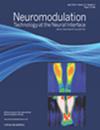Delay- and Pressure-Dependent Neuromodulatory Effects of Transcranial Ultrasound Stimulation
IF 3.2
3区 医学
Q2 CLINICAL NEUROLOGY
引用次数: 0
Abstract
Objective
Despite the growing interest in transcranial focused ultrasound stimulation (TUS), our understanding of its underlying mechanisms remains limited. In this study, we aimed to investigate the effects of TUS on several functional magnetic resonance imaging metrics by considering their latency, duration, and relationship with applied acoustic pressure.
Materials and methods
We recruited 22 healthy volunteers and used a pre- vs post-TUS protocol. Half of the volunteers were stimulated in the right inferior frontal cortex and the other half in the right thalamus. The fractional amplitudes of low-frequency fluctuations, regional homogeneity, degree centrality, local functional connectivity density, and eigenvector centrality were considered. These metrics were compared before TUS and at three different time points in the first hour after TUS.
Results
Our results showed that 1) TUS primarily alters functional connectivity metrics at both the local and global levels; 2) stronger alterations are observed when the delay after TUS increases and 3) when the applied acoustic pressure is close to the maximum.
Conclusion
These results suggest that some consequences of TUS might not be immediate, inviting us to revise the premise that TUS consequences are immediate and will progressively disappear.
经颅超声刺激的延迟和压力依赖性神经调节作用。
目的:尽管人们对经颅聚焦超声刺激(TUS)越来越感兴趣,但我们对其潜在机制的了解仍然有限。在这项研究中,我们旨在通过考虑其潜伏期、持续时间以及与施加声压的关系来研究TUS对几种功能磁共振成像指标的影响。材料和方法:我们招募了22名健康志愿者,采用us前后对照方案。一半志愿者的右侧额叶下皮层受到刺激,另一半志愿者的右侧丘脑受到刺激。考虑了低频波动的分数幅值、区域均匀性、度中心性、局部功能连通性密度和特征向量中心性。这些指标在TUS前和TUS后第一个小时的三个不同时间点进行比较。结果:我们的研究结果表明:1)TUS主要改变了局部和全局水平的功能连接指标;2)当TUS后延迟增加时,观察到更强的变化;3)当施加的声压接近最大值时。结论:这些结果表明,TUS的一些后果可能不是立竿见影的,这就要求我们修改TUS的后果是立竿见影的并且会逐渐消失的前提。
本文章由计算机程序翻译,如有差异,请以英文原文为准。
求助全文
约1分钟内获得全文
求助全文
来源期刊

Neuromodulation
医学-临床神经学
CiteScore
6.40
自引率
3.60%
发文量
978
审稿时长
54 days
期刊介绍:
Neuromodulation: Technology at the Neural Interface is the preeminent journal in the area of neuromodulation, providing our readership with the state of the art clinical, translational, and basic science research in the field. For clinicians, engineers, scientists and members of the biotechnology industry alike, Neuromodulation provides timely and rigorously peer-reviewed articles on the technology, science, and clinical application of devices that interface with the nervous system to treat disease and improve function.
 求助内容:
求助内容: 应助结果提醒方式:
应助结果提醒方式:


